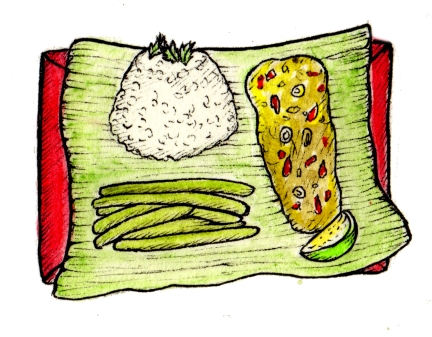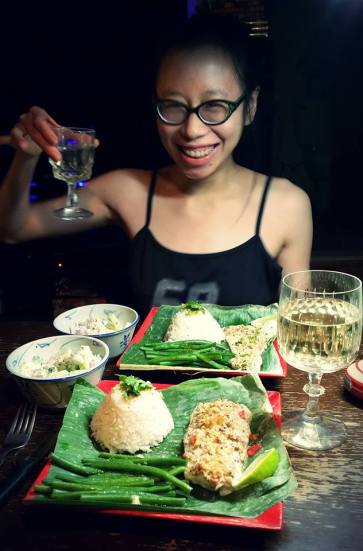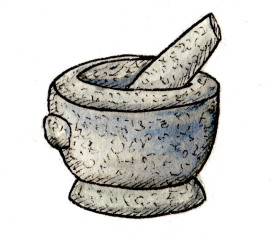
This is a dish we often enjoy! It’s a slightly different take on the Indian recipe. We often eat it on cold winter days. The subtle spice from the chilli burns your mouth, but the yogurt and soft fish balances it out, paired with aromatic jasmine rice! I often put the leftover liquid ‘sauce’ from the fish onto the rice and the blend of sweet, sour and spicy, soft and crunchy (from the nuts) can only be described as dimension-transporting, especially during the winter months. I highly recommend trying it out if you want to be transported to an earthy plane of herbs, spices and grounding aromas while a snowstorm surges outside.
In terms of ingredients, I use Tilapia fish because it blends well with Indian spices. I’ve tried using cod and I don’t recommend using it because cod does better with butter / Western ingredients. Same with the lime vs lemon thing: I am convinced lime goes better with Asian cooking and white fish, whereas lime’s slightly more intense sour flavour goes well with oily fishes like salmon or trout. In terms of the yogurt I chose, I actually found that out by accident! Plain yogurt is a bit bland for me and I dislike using sugar to sweeten things; using coconut Greek Yogurt adds that lovely sweet earthy taste which blends so well with the spices and the fish. Remember to buy Greek full fat yogurt over regular yogurt as it’s much creamier and less liquidity. 🙂
Tandoori Baked Fish
Main Ingredients
- 2 tilapia fillets
- Lime juice (I prefer to use lime over lemon because it has a more subtle flavour and compliments white fishes better)
- Coconut oil /ghee / olive oil for basting
- Cashews / Walnuts crushed
For Garnishing
- Fresh lime to serve
- Chopped fresh coriander leaves / green onions
Tandoori Paste
I usually make the paste with a mortar and pestle although you can also use a blender. I do think that stoneground spice pastes taste better. It’s up to you if it’s an available option or not.
 Ingredients for paste
Ingredients for paste
- 1 tablespoon coriander seeds
- 2 ts cumin
- Fresh ginger minced (I’m liberal… I usually chop a tablespoon)
- 3-5 cloves minced garlic
- 3 red bird-eye-chilli, deseeded and cut into small bits
- 1/2 cup (125ml) coconut Greek Yogurt (or any flavour. I actually like to use coconut yogurt for its natural sweetness)
- A pinch of rock sugar
- A pinch of pink salt
- Liberal amounts of white pepper
Dry roast the cumin and coriander first in a pan till they ‘pop’ for about 2 minutes. Usually you’ll know it’s ready when your pan starts making popcorn noises. Set aside. Grind rest of ingredients in a mortar and pestle, starting with the solids (ginger, garlic, chilli, coriander, cumin), then slowly adding a bit of yogurt till paste turns yellowish. I sometimes add some cayenne pepper or curry powder, as well.
 Prep:
Prep:
– Rub fillets with lime juice and set aside while making spice paste
– Marinate the fillets with spice paste.
– Use a knife and cut little sideways incisions (about halfway through) into the fish so the spice paste enters the flesh and it cooks more evenly.
– Top fish with chopped nuts
Cooking
- Preheat the oven to about 375 Fahrenheit
- Cook fish in oven for approx 14-16 minutes, depending on thickness of fish. Occasionally baste your fish from time to time with oil every 7 minutes or so. At 12 minute mark, check incision to see if the fish is white on the inside. If so, cook a bit more.
- Serve with jasmine rice, freshly cut coriander / green onions and lime wedges. I like to serve mine on a banana leaf as well!


 As a child, I grew up eating Alexander Road’s famous raw fish porridge every Saturday morning. For the uninitiated, raw fish porridge consists of savoury mouth-melting fish that dissolves into your mouth, mixed with delicious creamy congee, freshly cut ginger and the spicy tang of chilli; a combination that can only be described as apotheosis-tic. When my husband and I returned to that place last year, the place had shut down after decades because of the raw fish ban in Singapore. We were very sad. However, it’s with some consolation that I present to you my take on the classic Teochew Fish porridge, with a Japanese, Cantonese and Western twist.
As a child, I grew up eating Alexander Road’s famous raw fish porridge every Saturday morning. For the uninitiated, raw fish porridge consists of savoury mouth-melting fish that dissolves into your mouth, mixed with delicious creamy congee, freshly cut ginger and the spicy tang of chilli; a combination that can only be described as apotheosis-tic. When my husband and I returned to that place last year, the place had shut down after decades because of the raw fish ban in Singapore. We were very sad. However, it’s with some consolation that I present to you my take on the classic Teochew Fish porridge, with a Japanese, Cantonese and Western twist.
 Ingredients (3 servings)
Ingredients (3 servings)